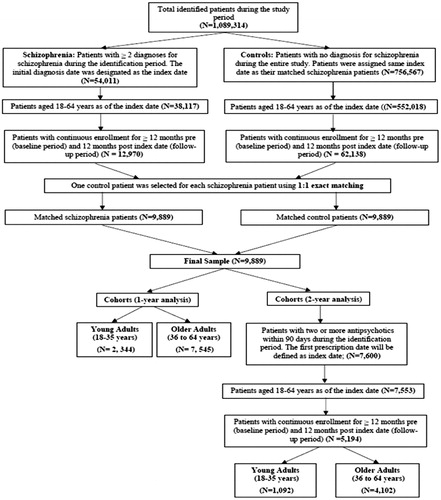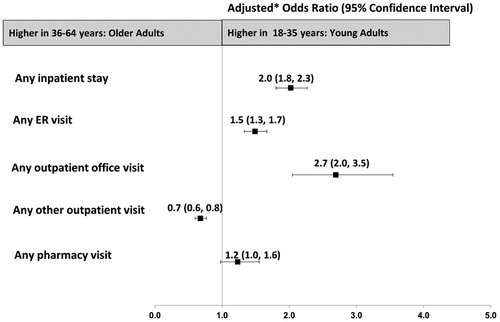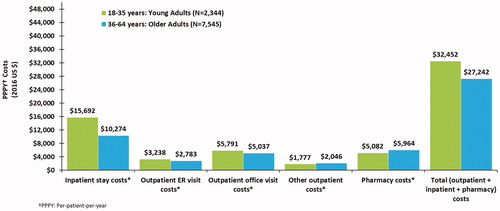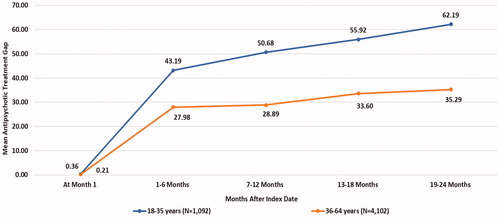Figures & data
Figure 1. Study population and cohorts. Patients were 1:1 matched based on the following variables: age, sex, race, and geographic region.

Table 1. Baseline demographics and clinical characteristics of young vs older adults with schizophrenia.
Figure 2. Adjusted odds ratio (95% CI) for all-cause HRU among young vs older adults with schizophrenia.

Figure 3. One-year adjusted follow-up all-cause healthcare costs among young vs older adults with schizophrenia.

Table 2. Two-year follow-up treatment outcomes among young vs older adults with schizophrenia.
Figure 4. Longitudinal analysis: proportion of patients prescribed APs with PDC ≥80%: young vs older adults with schizophrenia. Some patients had prescription fills with a lower number of days of supply, i.e. < 1 month, which resulted in adherence levels below 100% at month 1 after the index date. PDC, proportion of days covered.

Figure 5. Longitudinal analysis: mean antipsychotic treatment gap: young vs older adults with schizophrenia. Some patients had prescription fills with a lower number of days of supply, i.e. < 1 month, which resulted in adherence levels below 100% at month 1 after the index date.

Table A1. List of ICD-9-CM codes.
Table A2. HCPCS codes for substance abuse description.
